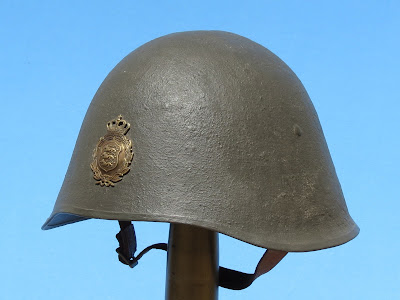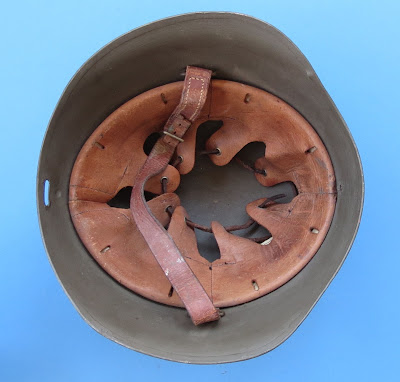Danish Queen Margarethe
Danish author Hans Christian Andersen
Danish author Karen Blixen
Danish philosopher Soren Kierkegaard
Danish prince Hamlet
Danish idiot
And my favorite Dane of all...
the m. 1923 steel combat helmet.
This is the helmet worn by the Danish army on April 9, 1940 when
Germany overwhelmed Denmark.
The invasion unfolded so rapidly that Denmark didn't have time to declare war on Germany. Danish military resistance was limited though spirited with the Danes knocking out many German armored cars and disabling a few tanks; the military resistance however lasted no more than six hours. This was one of the shortest armed invasions of the war. In all between 13 and 49 Danes were killed; sources vary widely but the number is generally agreed upon as 16.
With this, Denmark was occupied by the Germans until the end of the war.
Now for the walk around of the m.1923:
The profile of this helmet is one of the most distinctive and unusual of the interwar period.
The deep side skirts had a detrimental effect on the peripheral vision of the wearer.
Weighing at 3.4 lbs, this was one of the heaviest helmets of the war.
Made of Swedish steel, the 1.5 mm-thick plate this helmet provided very good protection.
Affixed to the front of the helmet is an oxidized brass badge of the Danish coat of arms
which was introduced in 1819.
The slot on the rear of the helmet allowed the helmet to be secured to the backpack
when in marching order.
The leather of the liner is of particularly high quality as is the
workmanship of the entire helmet. The vertical slits at the lower edge of the leather
provided ventilation.
The eight fingers of the liner are gathered and adjusted by a leather thong which is passed
through brass grommets. The significance of the crisply stamped numeral 3
is unknown to me.
The initials of the wearer are penciled onto the leather.
Split pins affix the liner band to the shell.
A brass plate riveted to the liner band notes the manufacturer as well as the serial number
of this particular helmet; another nod to the high quality of manufacture.
Flexible bales affix the chinstrap to the liner band.
A very robust brass buckles secures the high quality chinstrap.
The m. 1923 in action:
The Danish m. 1923; a favorite of the collection.
Although the military resistance to the Germans was limited it should be known that the Danes put up a spirited civilian resistance to the Germans, and that the Danish underground rescued and evacuated 8,000 of the 8,500 Danish Jews to safety.
In all, some 850 members of the Danish resistance died at the hands of the Germans.
In all, some 850 members of the Danish resistance died at the hands of the Germans.
See you next time with another cool helmet from the collection.
Mannie


























































